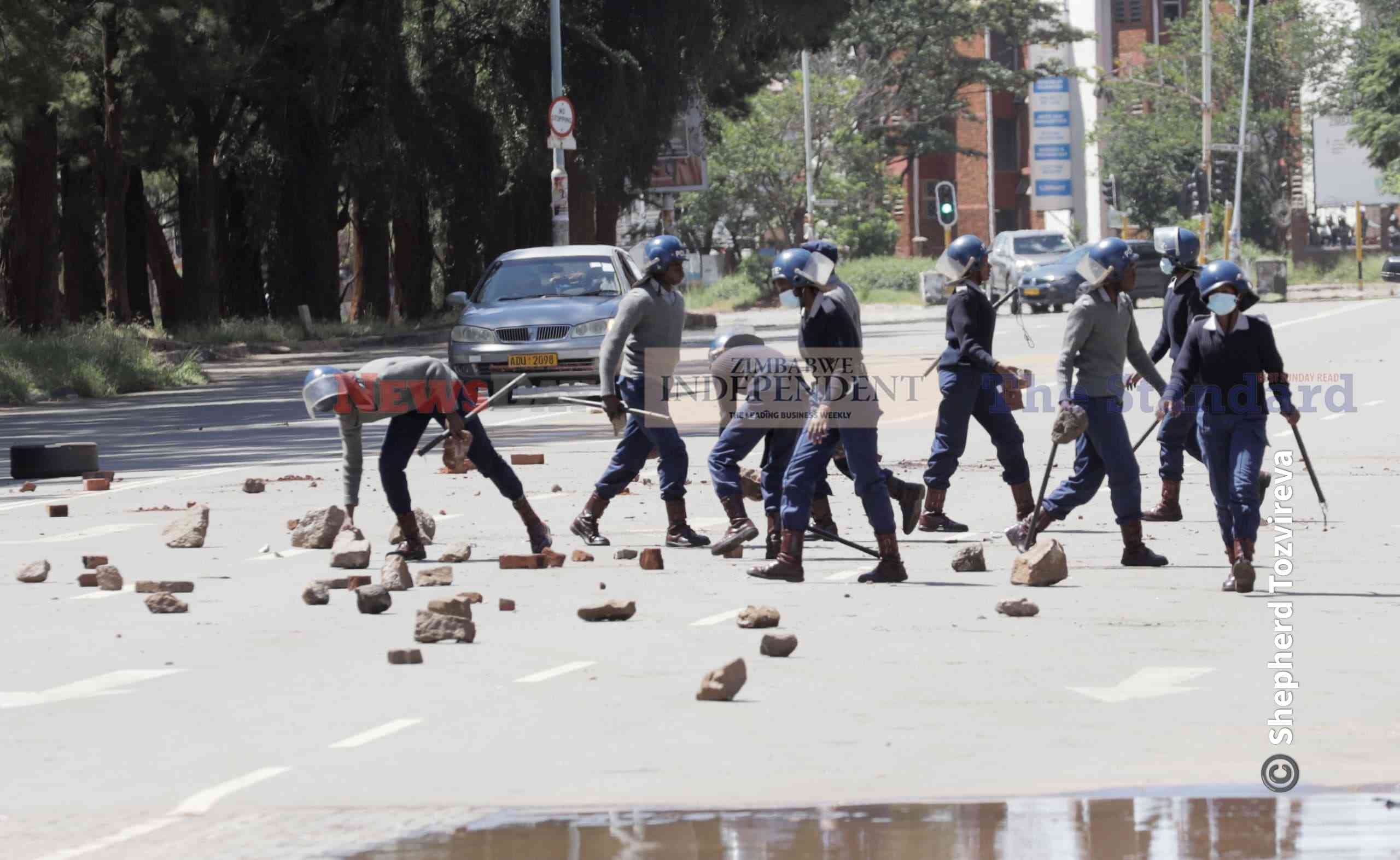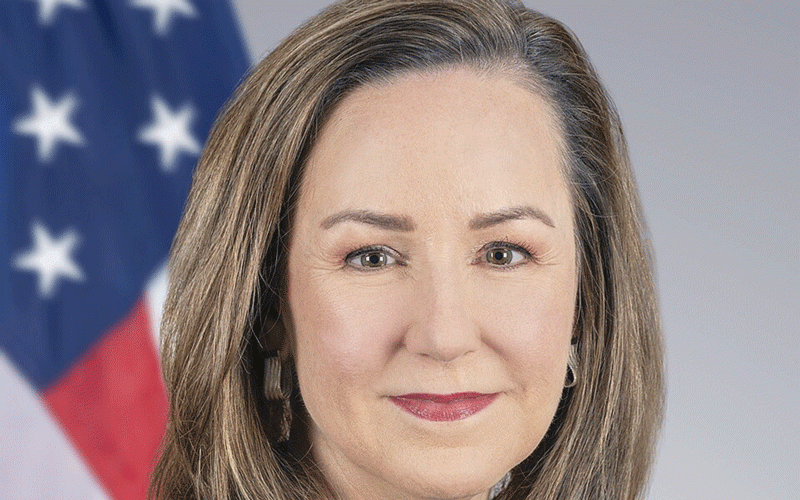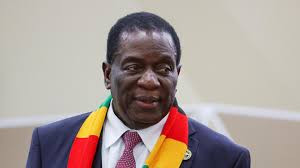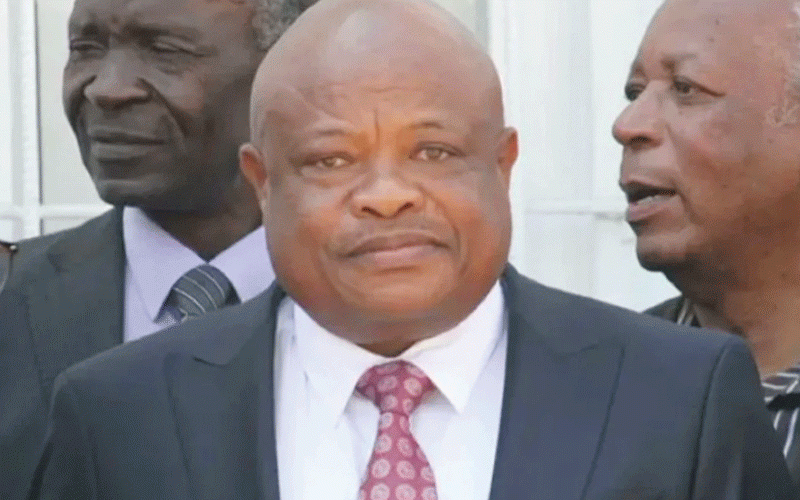
THE image of a man sprinting for dear life in Harare’s central business district on Monday with baton-wielding police — armed with tear gas canisters — in hot pursuit, attracted global attention, as Zimbabweans defied law enforcement agencies in a fresh push to shake the status quo.
In another corner of deserted streets, a handful protesters were captured on WhatsApp barricading roads, daring the police, and chanting protest songs.
“Bring your phones with you,” one of the organisers of the march shouted on social media, rallying risk-takers to record their march, broadcast the clashes, possibly emboldening others’ resolve.
If such discontentment had exploded over one and half decades ago, hundreds of millions of people who viewed NewsDay’s stunning images this week would only wait until Tuesday’s edition for glimpses of the riots — led by Blessed Geza — a former ruling Zanu PF heavyweight before his peers gave him marching orders recently.
But on full display was the power of social media, a revolution whose impact has unsettled many Africa dictators in the past few years.
Before technological advancements gave birth to social media, the world’s authoritarian regimes held a tight grip on traditional media — mostly State-controlled newspapers, radio and television — giving them the leisure to choose what their citizens read or viewed.
But WhatsApp, Facebook, Tik Tok and other platforms are increasingly holding sway, as demonstrated by this week’s developments.
Along with NewsDay, citizens broadcast the disturbances, dispatching them almost immediately, and helping Zimbabweans to make crucial decisions about their safety.
- Chamisa party defiant after ban
- Village Rhapsody: How Zimbabwe can improve governance
- News in depth: Partisan police force persecutes opposition, shields Zanu PF rogue elements
- Chamisa chilling death threat bishop defiant
Keep Reading
At the heart of Monday’s discontentment was the contentious plan by President Emmerson Mnangagwa’s supporters to extend his constitutional term, which will expire in 2028, following a decade marked by economic turmoil.
Zanu PF party’s October 2024 resolution, which seeks to prolong Mnangagwa’s rule until 2030, has sparked intense debate and resistance amid reports it has also amplified divisions within the party.
But publicly, Mnangagwa has maintained his position that he will leave at the end of his term in three years’ time.
He is likely to be succeeded by his deputy, Constantino Chiwenga — an ex-army chief widely credited for helping Mnangagwa take over the presidency in a surprise 2017 coup.
Leading political analysts acknowledged the WhatsApp revolution.
Ricky Mukonza, an associate professor of public affairs at Tshwane University in South Africa, argued that the advent of social media — as seen in Geza’s case — has enabled citizens to engage more actively in democratic discourse.
“Technology has opened an important avenue for enhanced participation in public affairs. Platforms such as X (formerly Twitter), Facebook, and others have allowed people to engage in public events, such as demonstrations, without being physically present,” Mukonza said.
“This reduces fear of harm associated with physical participation. Technology has also enabled diaspora communities to participate despite being abroad.”
Many Zimbabweans in the diaspora participated in the build-up to the protests, although critics said they were cowards pushing those on the ground into harm’s way.
However, Mukonza cautioned that without a strong opposition, social media mobilisation alone may not achieve meaningful change.
“An emerging trend is that citizens can self-mobilise to hold the government accountable, but they still need leadership — whether collective or individual — that commands public trust. Without it, efforts risk descending into chaos and losing focus,” he said.
“This leadership need not always come from political parties. People are disillusioned not only with government failures but also with opposition actors’ apparent ineptitude in strategy and tactics.”
The protest, though largely peaceful, brought attention to growing discontentment among Zimbabweans fed up with an economy in perpetual turmoil and a leadership style perceived as totalitarian by many.
Geza’s modus operandi — mobilising critical mass action through social media platforms — demonstrated how the technological boom has helped entrench democratic rights, such as freedom of assembly and expression. It is the situation across the world, but African governments have been slammed for trying to shut down social media platforms each time they are under fire from citizens demanding their rights.
Unpopular governments, faced with a restive populace, have resorted to stifling dissent by clamping down on the free flow of ideas online
Political analyst Rashweat Mukundu noted that in the absence of a viable opposition, aggrieved citizens increasingly turn to social media to voice discontent.
“What we have seen is that citizens can withdraw support from the government and express their distrust,” Mukundu said.
“The stay-away was largely organised online, proving that technology is now pivotal in political communication. This is a lesson for leaders and civic groups: rallies aren’t always necessary.
“What matters is a message that resonates. The 2030 agenda is dead in the water. People protested not just for Geza, but because they have lost faith in the government’s leadership and governance.”
Geza’s media activities, deemed subversive by authorities, have landed him on the police’s wanted list.
Governments that disenfranchise their citizens are being held accountable globally when civic space and democracy are constricted.
The firebrand war veteran, once a Zanu PF central committee member before his expulsion last month, has called on Mnangagwa to step down over allegations of corruption and mismanagement.
Through social media, Geza has rallied Zimbabweans to demonstrate against Mnangagwa’s alleged corrupt rule, accusing him of betraying the guiding principles of Zimbabwe’s liberation struggle.
Meanwhile, the Citizens Coalition for Change (CCC), once led by Nelson Chamisa, has been decimated, with numerous legislators recalled from the House of Assembly.
Chamisa’s resignation from active politics in January 2023 led to the subsequent rise of Sengezo Tshabangu as opposition leader, but he has been widely perceived as a tool of the ruling party.
When Geza announced his protests, Chamisa distanced himself from the planned demonstrations, which were intended to pressure Mnangagwa into resigning.
The CCC founder’s disavowal of Geza’s plans was widely circulated on social media, mostly WhatsApp, the most used in Zimbabwe.
It further illustrated technology’s potency in advancing democracy and expanding the civic space.
As this week’s mass stay-away demonstrated, a disillusioned citizenry will increasingly leverage social media to challenge perceived poor leadership.










